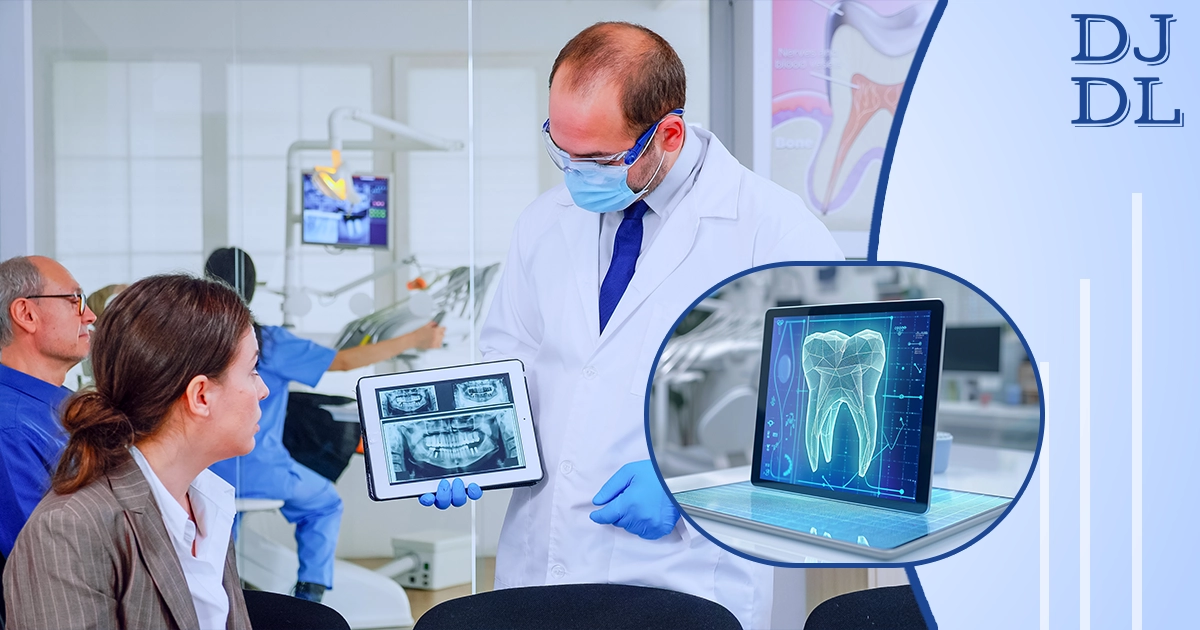
Transform Dental Practices via Digital Impression Technology
Digital impression technology is transforming the field of dentistry by replacing traditional methods of taking dental impressions with more precise, efficient, and comfortable digital scans. Digital dentistry innovations continue to advance and become a standard part of modern dental care, offering significant benefits to dentists and patients. Integrating digital impression technology into a dental practice not only enhances the patient experience but also improves the overall efficiency and accuracy of dental procedures. Here’s how the benefits of digital impression technology are revolutionizing dental practices:
- Enhanced precision and accuracy: Traditional dental molds suffer from inconsistencies due to patient movement, temperature changes, or the quality of the impression material. Digital impressions eliminate these inconsistencies. Digital scanners capture highly detailed and accurate 3D images of the teeth and gums, leading to better-fitting dental restorations such as crowns, bridges, and dentures.
- Improved patient comfort: Traditional dental impressions often involve the use of sticky, messy materials that can cause discomfort or trigger a gag reflex in patients. On the other hand, digital impressions use a small handheld wand to scan the inside of the mouth, making the process much quicker and more comfortable.
- Streamlined workflow: Digital impression technology streamlines the workflow within dental practices. Dental labs can easily share the digital files, which reduces the turnaround time for creating dental restorations. This efficiency can lead to quicker treatment times and the possibility of same-day restorations, enhancing patient satisfaction.
- Reduced risk of errors: The high precision of digital impressions minimizes the risk of errors that could lead to ill-fitting restorations. Dentists can immediately review the scans and make any necessary changes, reducing the need for retakes and adjustments. This results in better outcomes and fewer follow-up appointments.
- Better patient communication and education: Digital impressions allow dentists to show patients real-time images of their oral condition, making it easier to explain treatment options and outcomes. This visual aid can improve patient understanding and engagement in their treatment plans.
- Integration with CAD/CAM technology: Digital impressions seamlessly integrate with computer-aided design and manufacturing (CAD/CAM) systems, allowing for the in-house production of dental restorations. This integration enhances the precision and efficiency of creating custom dental appliances, further benefiting both patients and practitioners.
- Increased adoption of teledentistry: The use of digital impression technology supports the growth of teledentistry by allowing dentists to share digital scans with specialists or consult with other professionals remotely. This capability enhances collaboration and provides patients with access to a broader range of dental expertise.

How digital impressions streamline workflows and enhance patient experience.
Digital dentistry technology is significantly streamlining workflows in dental practices and enhancing the patient experience. Dental workflow efficiency contributes to a more streamlined, patient-centric approach to dental care. Digital impressions streamline workflows and enhance patient experiences in several key ways:
Streamlining Workflows
- Efficient data collection: Digital impression systems capture detailed, 3D images of the teeth and gums quickly and accurately, eliminating the need for traditional physical molds. This speeds up the process and reduces the time spent on each impression.
- Seamless integration with CAD/CAM: The CAD/CAM systems used for designing and fabricating restorations can directly integrate digital impressions. This integration reduces manual steps and minimizes errors, leading to faster and more precise production of crowns, bridges, and other dental devices.
- Faster lab turnaround: Instant electronic transfer of digital files to dental labs speeds up communication and cuts down on restoration wait times. This often results in faster delivery of final products and a more efficient workflow.
- Reduced need for remakes: The accuracy of digital impressions minimizes the likelihood of needing remakes due to errors. This reduces waste and saves time for both the dental practitioner and the patient.
- Enhanced record-keeping: Digital impressions are stored electronically, making it simple to access, review, and update patient records. This helps in maintaining a comprehensive and organized patient history.
Enhancing Patient Experience
- Increased comfort: Digital impression systems use a small, wand-like device to capture images, which is much more comfortable than traditional impression trays that can cause discomfort or gag reflexes. Patients generally find digital impressions less invasive and more pleasant.
- Faster procedure: Because of the rapid nature of digital impressions, the patient spends less time in the dental chair. The entire process is faster, reducing overall appointment times.
- Immediate visualization: Some digital impression systems allow patients to see a 3D model of their teeth and discuss treatment options in real-time. This helps patients better understand their treatment plan and feel more involved in their dental care.
- Fewer follow-up visits: With accurate digital impressions, there’s often less need for follow-up visits to correct issues with impressions or fit. This reduces the number of visits required and improves overall patient satisfaction.
- Better communication: Specialists and other dental professionals can easily share digital files, facilitating better communication and collaboration on treatment planning. This ensures that patients receive comprehensive and coordinated care.
